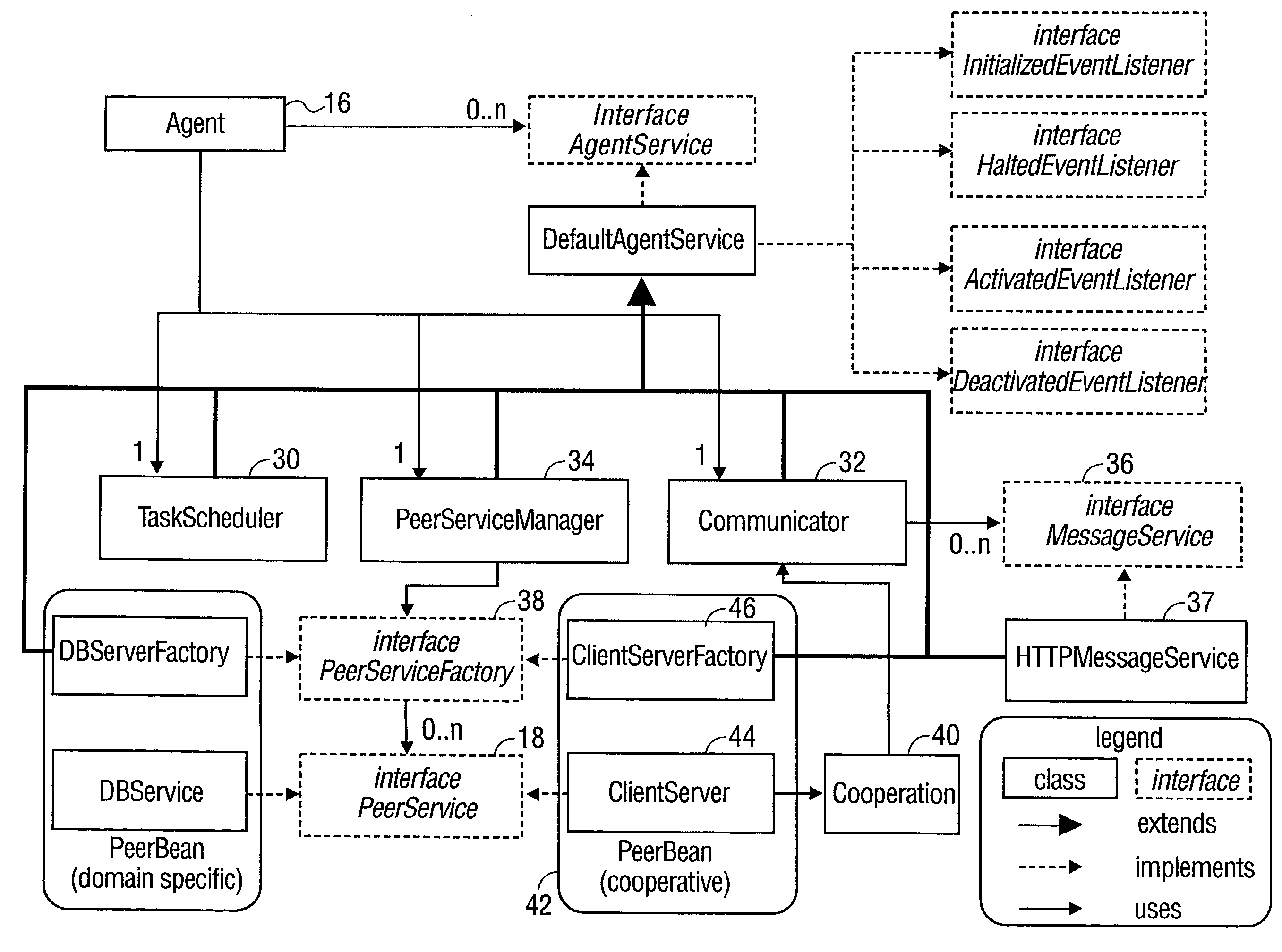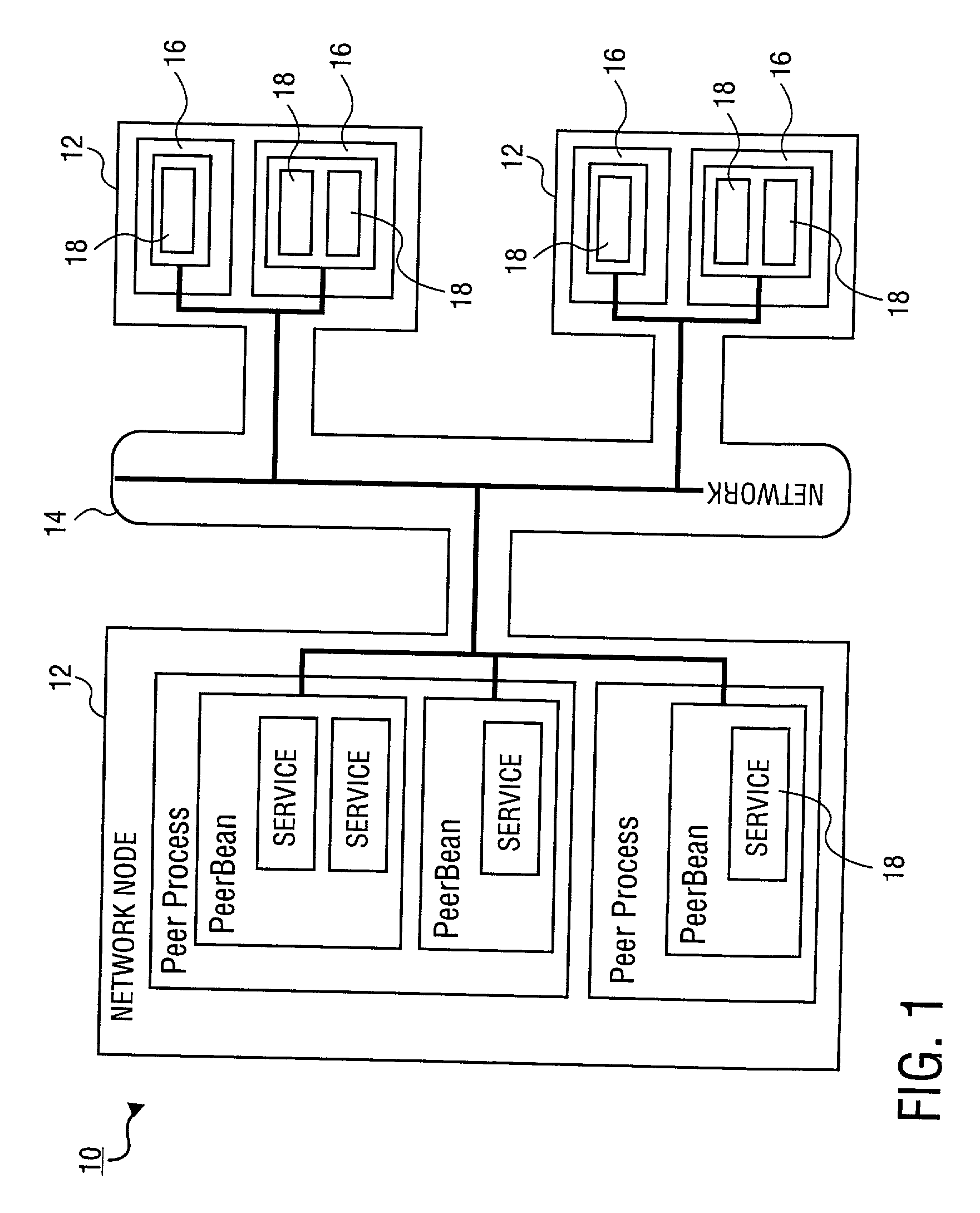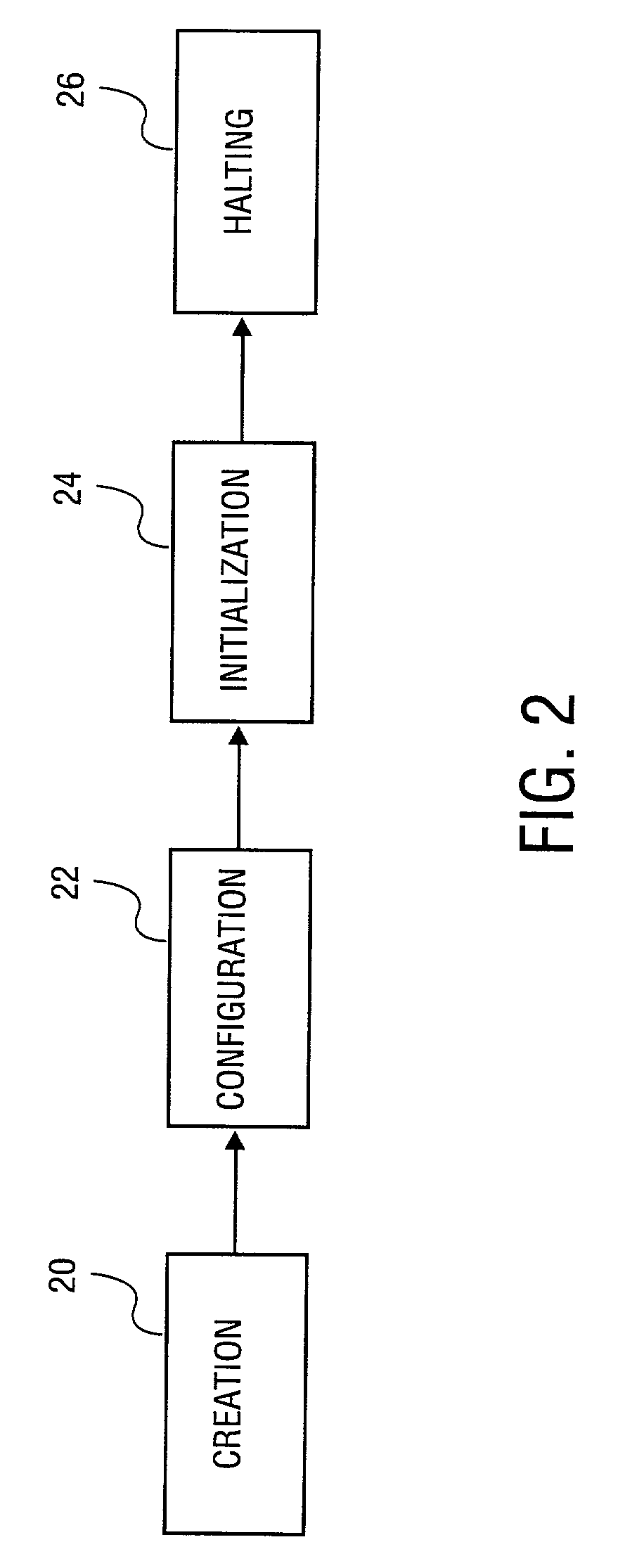Component-based system for distributed applications
a component-based, distributed application technology, applied in the direction of multi-programming arrangements, program control, instruments, etc., can solve the problems of tightness and difficulty in achieving current component architectures
- Summary
- Abstract
- Description
- Claims
- Application Information
AI Technical Summary
Benefits of technology
Problems solved by technology
Method used
Image
Examples
example 1
Simple Client / Server Interaction Between a Buyer and a Supplier
[0035] In the first scenario, a buyer may already know the desired supplier for a given product. In this case, the buyer agent may call a Clientserver cooperation for a PurchaseProduct service on that supplier agent. It is important to note that suppliers are automatically included in the system as soon as they specify a service. The agent automatically registers this service with the peer network and, as such, the supplier agents can be found. No additional overhead is required. Using the invention, a supplier agent need only implement the PurchaseProduct service, and the buyer agent need only implement the initiation of the process, and possibly a web-based interface for invocation of the process (perhaps one supporting deciding on the bids of the suppliers). The following pseudo-code represents an implementation of this example.
[0036] The class Product represents a shared definition of a product between buyers and s...
second example
Buyer Uses Sealed Bid Contracting—to Select from Several Suppliers
[0046] In the second scenario, the buyer may not know which supplier to get the product from. In particular, the buyer may want to choose the supplier with the lowest price for the product. In this case, the buyer agent may use a sealed bid contracting cooperation on the PurchaseProduct service. Once the buyer agent has found the prices from the different suppliers, it can choose its preferred supplier. This can happen either automatically by invoking a pre-programmed decision making process, or the buyer agent can graphically present the choices to the human buyer (e.g. via a web-based interface).
[0047] It is important to note that the supplier agents generate the offered prices autonomously, independently, and based on whichever means they have at their internal disposal. This allows one supplier agent to get the price from a database, for example, another supplier agent to get its price from a salesperson (e.g. v...
PUM
 Login to View More
Login to View More Abstract
Description
Claims
Application Information
 Login to View More
Login to View More - R&D
- Intellectual Property
- Life Sciences
- Materials
- Tech Scout
- Unparalleled Data Quality
- Higher Quality Content
- 60% Fewer Hallucinations
Browse by: Latest US Patents, China's latest patents, Technical Efficacy Thesaurus, Application Domain, Technology Topic, Popular Technical Reports.
© 2025 PatSnap. All rights reserved.Legal|Privacy policy|Modern Slavery Act Transparency Statement|Sitemap|About US| Contact US: help@patsnap.com



